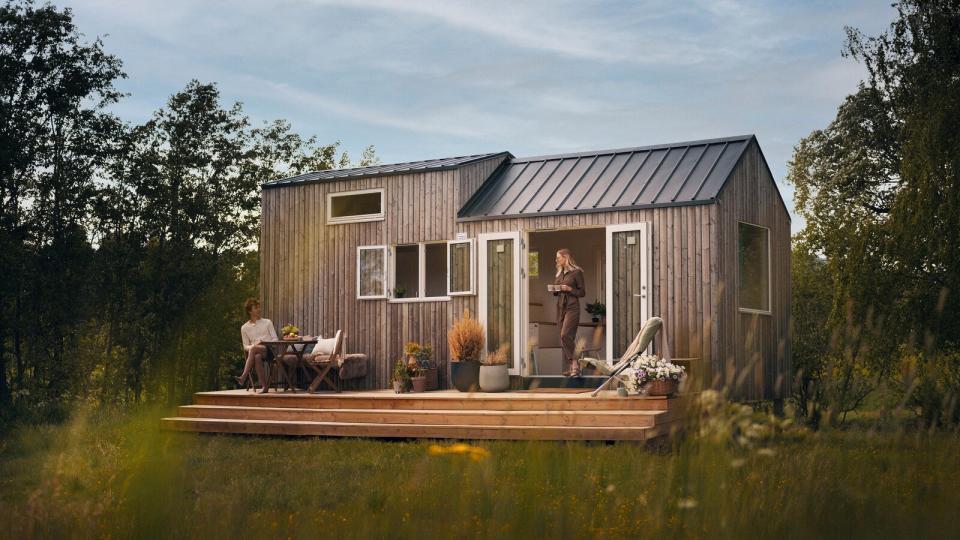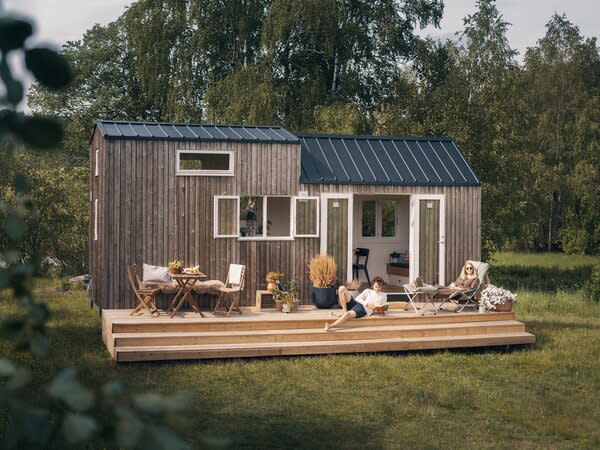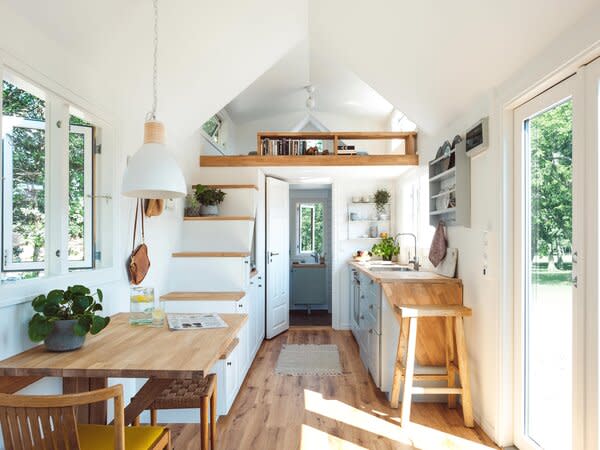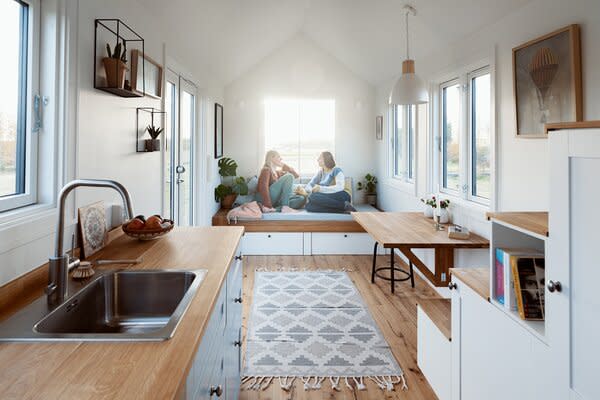These $103K Tiny Homes Are Designed to Withstand Norway’s Frigid Winters
Norske Mikrohus tells us that demand is growing for their four turnkey tiny home models—but the company cautions against high international shipping costs.

Welcome to Tiny Home Profiles, an interview series with people pushing the limits of living small. From space-saving hacks to flexible floor plans, here’s what they say makes for the best tiny homes on the planet. Know of a builder we should talk to? Reach out.
"Wow, this is fun!" was David Reiss-Andersen’s reaction when his wife, Jeanette, showed him pictures of tiny homes on Instagram. Something about the exchange inspired them to try out the trend themselves, and the couple built their first model over the next six months. Everything snowballed from there: They founded Norske Mikrohus in 2018, opened a factory for production in Vollebekk, Oslo, and then had to move to larger premises three years later to keep up with demand. "It seems like we hit upon and created a trend that’s here to stay," David tells us.
While their homes have become more popular, the regulations around tiny homes in Norway have evolved. As an example, when Dwell featured Norske Mikrohus four years ago, the fabricator was building their homes on wheels—something they’re no longer allowed to do. "For now, the [tiny house] trend is a step ahead of the regulations; hopefully, this will change," explains David. Fortunately, the increasing demand and oversight have also brought new opportunities and directions for growth. Here, David and Jeanette talk to us about what lays in store for their company, including the construction of a tiny house village and the launch of a brand-new microhouse design.
What qualities make your tiny home stand apart from the rest?
Norway’s demanding climate, characterized by hot summers, wet autumns, and cold winters, necessitates careful consideration in our building practices. Our tiny houses are crafted locally in Norway, specifically tailored to withstand the varied Norwegian climate. As developers operating in Norway, we adhere to rigorous regulations to ensure that our end users receive a robust and high-quality product.
Beyond our commitment to building tiny houses with exceptional quality, our primary focus is on functionality. Designing homes within a 30-square-meter (323-square-foot) space is a true art, and we proudly assert that our solutions are meticulously crafted to meet high standards of well-thought-out functionality, providing a satisfying life cycle on a compact footprint.
See the full story on Dwell.com: These $103K Tiny Homes Are Designed to Withstand Norway’s Frigid Winters
Related stories:




